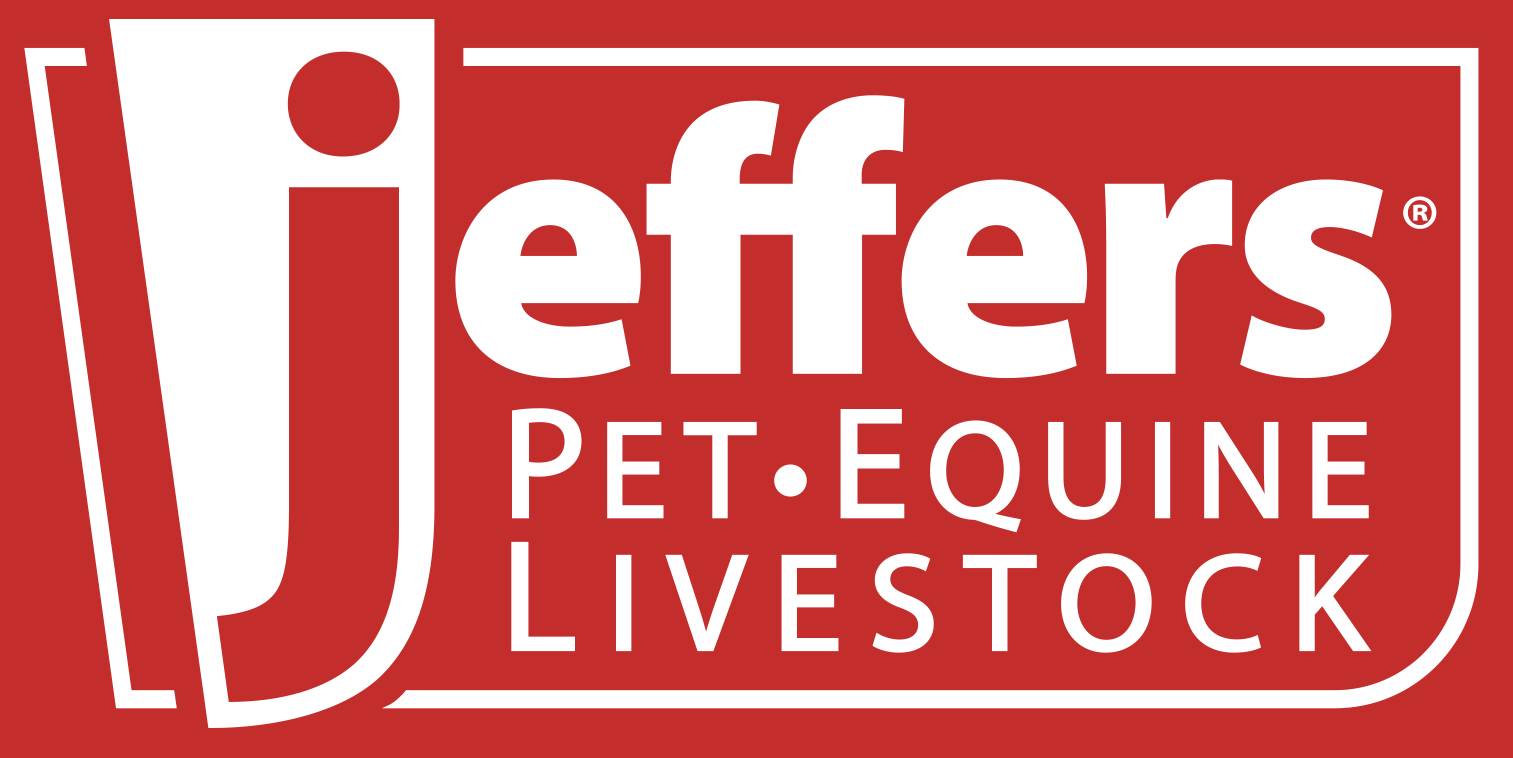Spring Grasses Can Cause Laminitis
Posted April 13, 2015 in Equine Blog by Jeffers Staff

 When some horses graze on beautiful luscious grass, it could potentially turn into serious hoof problems.
When some horses graze on beautiful luscious grass, it could potentially turn into serious hoof problems.
Laminitis can cripple susceptible horses within a few days of spring grazing. Some horses are also susceptible during fall. There are several components to this type of disease. Early diagnosis and treatment of the disease is key to prevent worsening of the condition. Please contact your veterinarian immediately.
Be Aware of Fructan

Some grasses are high in fructan, a fructose and glucose component of primarily cool-season grasses, which can cause hoof problems.
Genetic predisposition: The horse’s hindgut is unable to process the fructan because of disease or an infirmity.
The result is damaged laminae, a “cushion” of blood vessels and tissue surrounding the inner wall of the hoof. If these become damaged, the coffin (pedal) bone of the lower hoof may push down through the sole of the hoof — a painful condition.
Laminitis can occur when horses get into grain in the feed room, too. Cushing’s Disease or hypothyroidism can cause a predisposition to laminitis. Corticosteroids can cause it.
Notice the Symptoms
- An unwillingness to move, maybe a staggering gate. The horse may stand with forelimbs extended.
- A thickened neck crest (grab the mane area and pull back and forth – it should be a little loose, not too stiff).
- Pitting or softening of the coronary band above the horn of the hoof.
- A hard, hammering digital pulse when checking the pulse near the pasterns.
- Characteristic “fever rings” on the hooves and maybe bruising of the soles or abscesses.
- Warm or hot hooves and a temperature may be present, but not always.

Treatment involves eliminating the cause. Farrier and veterinary involvement are paramount. The veterinarian may take x-rays and the farrier may apply special pads and shoes to support the frog and the coffin bone above it. EasyCare manufactures the Easyboot® Rx boot that provides support and relief for horses that are suffering from lameness due to laminitis and founder. You can also move the horse to something softer for the horse to stand on such as peat moss or masonry sand.
There will be a long period of rehabilitation for the horse, but equine veterinarians say most horses can recover and be ridden again. Discuss with your veterinarian the benefit of using a feed through supplement formulated for horses with founder and laminitis. LaminaSaver, manufactured by Figuerola Labs, enhances the body’s natural ability to maintain and protect the health of the laminae, hoof capsule, sole, frog, white line, coffin and pastern bones, and connective tissues.
Personal Experience

When Mac became ill with severe laminitis two years ago, we were curious about the cause, so researched it. The research is a file about three inches thick. We discovered that fructan in high amounts is the culprit with Mac and other such horses.
Fructan differs from grass starches that horses can digest easily. Fructan is fermented by bacteria and can move undigested into the hindgut. An overload in a short time causes high numbers of fructan-fermenting bacteria. Through a metabolic process in the hindgut that may involve raised insulin levels and sometimes insulin resistance in the blood of some horses, lamina damage occurs.

Fructan rises in the grass stem dependent on temperature, light and moisture. Levels tend to be lowest in the morning, increasing into the mid-afternoon and evening. Safest time? Early morning after the temperature has been at least 40 degrees Fahrenheit. Fructan production increases when temperature drops below 40 degrees. Even cut and baled hay that is stored can contain fructan.
Mac has recovered and has been ridden. Last year and this year, he was put in a corral in March to prevent him from becoming ill with laminitis. He stays corralled several months with walks for physical and mental health. He will forage on fed hay until the fructan level decreases in late spring. Last year, we started excursions out to graze for two-hour intervals in June and he could do regular grazing by July. It’s a pattern that will continue throughout his life.
To keep your horse’s hooves in tip top shape, see Jeffers Equine’s full range of hoof care supplies. To learn more about hoof problems contact Jeffers’ Equine Specialist Kim at kcahill@jefferspet or call Jeffers 1-800-533-3377 and ask for Kim.
~ ~ ~ ~ ~ ~ ~ ~ ~ ~
Neal McChristy is a freelance writer with over 25 years journalism experience in magazine, newspaper and Web-based work. With over 16′ years of experience as a reporter and editor in the printing and imaging area McChristy has been contributing editor for a magazine column in the wide-format industry for seven years. He and his wife have three horses and were considered “green,” knowing little about horses when they began to acquire them in 1998. They learned about them through training lessons by Pat Parelli, John Lyons and others in the field of “gentle training” and “natural horsemanship”. Neal lives in Pittsburg, Kansas, and currently writes action-adventure novels, which he has done for over 10 years. You are welcome to contact him at freelance9@cox.net
